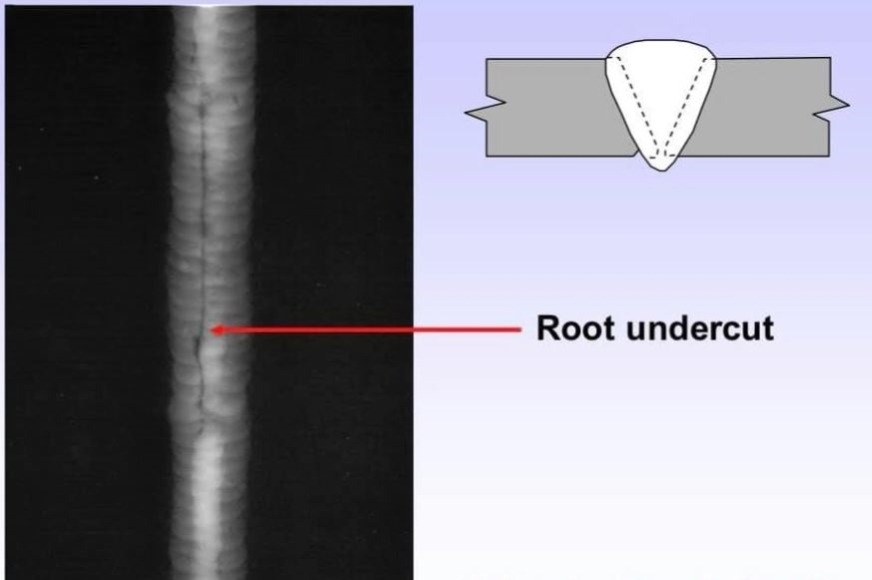Ideal Practices for Preventing Weld Undercut: Grasping the Basics
Ideal Practices for Preventing Weld Undercut: Grasping the Basics
Blog Article
Crucial Tips for Welders: Avoiding Undercut Welding and Ensuring Stronger Weld Joints
In the world of welding, attaining resilient and strong weld joints is the cornerstone of generating high-grade job. One typical challenge that welders often encounter is undercut welding, which can endanger the stability of the weld joint.

Recognizing Undercut Welding
Undercut welding is a common welding issue that occurs when the weld steel fails to appropriately fill the groove and results in a groove-like clinical depression along the weld bead. This flaw weakens the weld joint, making it prone to cracking and failure under anxiety. Undercutting can be triggered by various aspects, consisting of excessive welding present, high welding rate, improper electrode angle, wrong electrode size, and bad welding strategy.
One of the primary factors for undercut welding is an inequality between the welding existing and the welding speed. If the welding current is expensive or the welding rate is also quickly, the weld metal may not effectively fill up the groove, bring about damaging. Additionally, utilizing an electrode that is as well huge can cause a similar end result, as the excess metal can not appropriately move right into the groove.
To prevent undercut welding, welders ought to ensure they are making use of the proper welding specifications, preserve a suitable electrode angle, select the suitable electrode dimension, and technique correct welding strategies. By addressing these factors, welders can reduce the risk of damaging and create more powerful, extra dependable weld joints.
Proper Welding Technique
Efficient welding method plays a vital role in making certain the quality and honesty of weld joints. One fundamental element of correct welding method is maintaining the right angle and distance between the welding weapon and the work surface.
In addition, a constant and constant hand motion is important for producing strong and durable weld joints. Welders ought to aim for smooth, consistent activities to make certain also distribution of the weld product. Correct manipulation of the welding weapon and filler product is additionally key to attaining ideal penetration and blend.
Moreover, managing the warm input and selecting the appropriate welding criteria based on the material being welded are essential factors in accomplishing premium welds - Preventing weld undercut. Welders must comply with the suggested setups given by welding treatment specifications and change them as needed based upon the details needs of the project. By understanding correct welding strategies, welders can considerably improve the strength and integrity of their weld joints
Picking the Right Electrode
Preserving the appropriate angle and distance in between the welding weapon and the workpiece is essential when taking into consideration the value of choosing the appropriate electrode in welding applications. The choice of electrode plays an important function in determining the high quality and stamina of the weld joint. Electrodes are available in various types, each designed for specific objectives and materials.
First of all, selecting the suitable electrode size is important. Thinner electrodes are appropriate for welding thin products, while thicker electrodes are better for thicker materials and greater warm applications. Matching the electrode diameter to the density of the work surface helps accomplish a well balanced weld.
Secondly, comprehending the product composition of the electrode is vital. Different electrodes are designed for welding particular products like steel, stainless steel, aluminum, or cast iron. Utilizing the proper electrode material ensures click reference great fusion and minimizes the danger of flaws in the weld.
Last but not least, thinking about the welding setting and strategy is important when picking the electrode kind. As an example, particular electrodes are much better suited for vertical or overhead welding settings, while others work well for flat or straight placements. Picking the ideal electrode based on the welding technique enhances the total weld quality and honesty.
Preparing the Base Steel
To make sure an effective welding process, what sites preliminary steps should be taken when preparing the base metal for welding? Furthermore, any existing weld product or residue from previous welding ought to be removed to ensure a clean surface area for the brand-new weld.

Conducting Post-Weld Inspections

After conducting these evaluations, welders should contrast the outcomes versus sector standards and project requirements to ensure that the weld joint satisfies all needed standards. Any type of inadequacies or inconsistencies found throughout the post-weld assessment needs to be immediately dealt with with proper restorative actions to ensure the weld's integrity. By diligently performing post-weld examinations and quickly addressing any problems, welders can maintain the high quality and integrity of their work, ultimately adding to the safety and security and longevity of the welded frameworks.
Conclusion

In final thought, avoiding undercut welding and making sure stronger weld joints require a mix of proper welding technique, selecting the best electrode, preparing the base steel appropriately, and performing post-weld inspections. By comprehending the reasons for undercut welding and applying the required preventative measures, welders can generate top notch weld joints that fulfill sector requirements and guarantee the architectural honesty of the bonded parts.
Undercut welding is a typical welding defect that occurs when the weld metal fails to properly fill the groove and results in a groove-like clinical depression along the weld grain (Preventing weld undercut). Damaging can be created by various variables, consisting of excessive welding existing, high welding speed, improper electrode angle, incorrect electrode size, and inadequate welding strategy
One of the main factors for undercut welding is an inequality in between the welding existing and the welding rate. If the welding current is as well high or the welding speed is also fast, the weld steel might not effectively fill up the groove, leading to damaging.Maintaining the correct angle and distance between the welding weapon and the work surface is basic when taking into consideration the significance of selecting the right electrode in welding applications.
Report this page